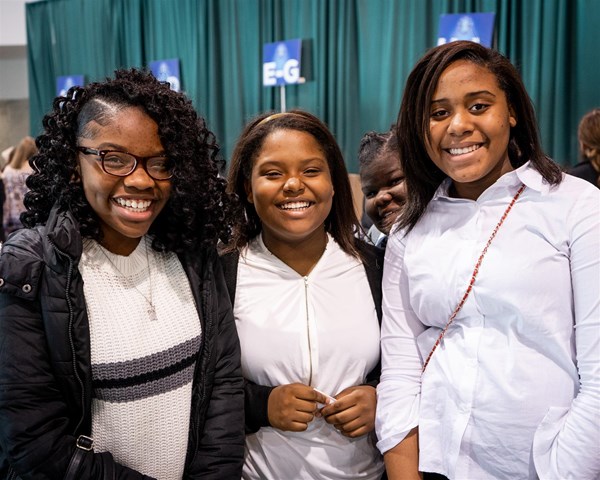ProveN Success
High school students in CTE/CTSOs go on to postsecondary education at a higher rate.
Over 70% of students in CTE/CTSOs pursue postsecondary education shortly after high school. Moreover, students in CTE/CTSOs typically enroll in more vigorous academics than their non-CTE/CTSOs counterpart. This means that they are better prepared for college and university, leading to more students who complete their post-secondary education.
- Students who enroll in CTE courses are more likely to complete a college-prep curriculum
- 4 out of 5 students who enrolled in CTE graduates and pursued postsecondary education head earned a credential or were still enrolled two years later.
- 80% of students in college prep and CTE met college and career readiness goals compared to only 63% of students only taking college prep.
- Taking CTE courses more than doubles the rate of college entrance for minority students.
The average high school dropout rate hovers at 6% nationally, which means more than 1.2 million students drop out every year. However, about 94% of students enrolled who concentrate on career and technical education graduate—that’s about 11% higher than the national average. The importance of earning a high school diploma can’t be underestimated: high school dropout makes $10,000 less than people with a high school diploma and about $36,000 less than those with a bachelor’s degree. <p>
- 81% of high school dropouts say that real-world learning opportunities would have kept them in high school.
- High-risk students are 8 -10 times less likely to drop out in the 11th and 12th grades if they enroll in a CTE program.
- Quality CTE program can reduce a school’s dropout rate by as much as 6%.
- CTE students are less likely to fail a course or be absent from school.
Today’s economy requires skilled workers in all sectors, which CTE/CTSOs prepare students for as they enter the workforce. Students enrolled in CTE/CTSOs are more confident than non-CTE/CTSO students with their ability to learn real-world skills in school. Moreover, only 2% of CTE/CTSO students feel that they “don’t know” what they will do after high school compared to 8% of non-CTE/CTSO students. CTE/CTSOs give students a leg up on their peers because they already have experience in their desired field of employment as well as opportunities to network with industry professionals.
- 95% of CTE concentrators who did not enroll in post-secondary education were employed within two year of high school graduation and many worked in occupations related to their CTE concentration.
- The U.S. Bureau of Labor Statistics reports that 70% of jobs come from a person’s network. The higher the quality and the more expansive the network, the more likely that graduates will find a fulfilling career that they are excited about and proficient at doing.
- During the Great Recession, companies spent $12 billion on leadership development. CTE/CTSOs provide leadership training for students.

FOR EVERY $1 INVESTED IN CTE/CTSOS, THERE IS A $10 RETURN
Economic Imapct
With more high school graduates than non-CTE/CTSO students and higher rates of post-secondary education, CTE/CTSO graduates contribute to the economy by learning the skills that translate to well-paid jobs. If the national average for high school graduation reached 90% (the average graduation rate for CTE/CTSO students is 94%), the economy would grow by $5.7 billion and $664 million in federal, state, and local taxes.
- 46% of employers find difficulty finding skilled talent, which means a loss of $14,000 per unfulfilled job. CTE/CTSO graduates meet this demand because they learn in-demand skills while still in high school.
- Talented students learn leadership skills and build networks so they can enter the job market quickly and need less time to train on the job.
